At Great Peninsula Conservancy we talk a lot about conservation projects at the time we acquire them, but what happens to these properties in the years that follow? And what does it mean to protect them forever?
Stewardship is at the heart of this mission.
I sat down with Erik Pedersen, our Stewardship Manager extraordinaire, and discussed the ins and outs of the stewardship program. Erik has worked at GPC since 2010. You’ve probably seen him at a work party hauling gravel or a member event with his family. He oversees much of the on-the-ground stewardship of GPC’s properties, which includes writing management plans, implementing forest restoration projects, and coordinating volunteer land stewards.
How much time do you spend on a new property? What do you take with you?
I spend an average of about two days traversing each new property, to assess its conservation values and stewardship needs. Brenna, our Conservation Associate, often accompanies me on these property assessments. That’s followed by a number of days at our desks, producing maps, organizing photos, and preparing written descriptions that are all part of the management plan.
I bring my phone to take boundary pictures, clippers and a machete to get through overgrowth, a clipboard, GPS receiver, and bear spray (because you never know).
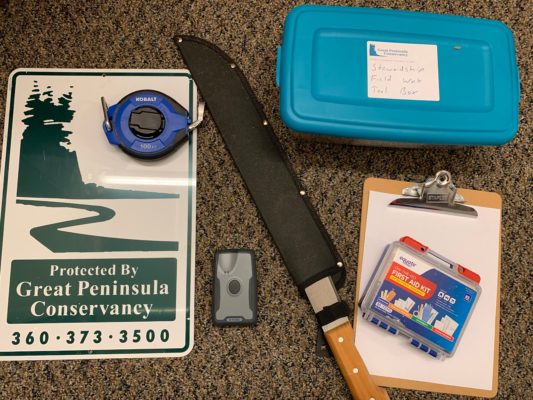
Tell me about the GPS device.
Our new GPS receiver will help both the conservation and stewardship staff know with much better accuracy where we are on the ground. Cell phones and traditional recreational GPS devices aren’t as reliable. Much of my stewardship work involves monitoring for boundary encroachments, so knowing that I’m within 30-40 feet of our property boundary, as was the case with our old GPS device, is usually a worthless piece of information. The new device often gives a reading within 4-5 feet, or the width of my outstretched arms. That’s a much more useful piece of information.
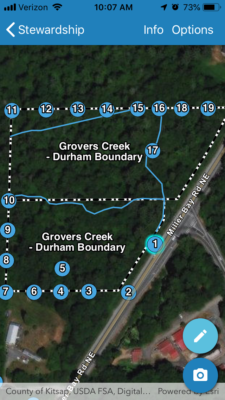

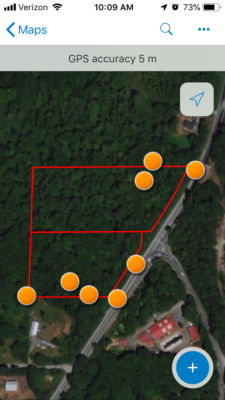
What is the craziest encounter you’ve had while on a property?
Stumbling upon a lone, secret old-growth tree on the southern portion of our new Curley Creek Tyner Preserve was one of my favorite moments from my years of traipsing through GPC properties. Its circumference at breast height is 17 feet! I bet it’s the biggest tree in that area for miles around.
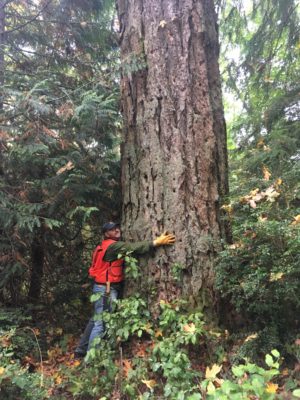
What type of wildlife have you seen?
Eagles, deer, a fox… I’m not a great scat identifier, but I have seen signs of bears where they rubbed and clawed trees. There’s also a sizable cougar den on one of the properties that is surrounded by coyote skulls!
Let’s talk invasive species and native plants. How do you manage these habitat destroyers and boosters on each property?
For the last several years, GPC has been doing more and more work to clear properties of invasive plants and replace them with native plants. I just finished a batch of six invasive clearing and replanting projects in 2018, and have a few more lined up for this year.
We do most of our work clearing invasive plants by hand. Scotch broom, ivy, holly, laurel, and blackberry are often best cut by hand and piled up. I’ve brought in a mower on occasion when the site is accessible. Some of these plants regrow or re-sprout more than others, so we take care to cut brush back when it tries to return in order to give the native plants a chance to establish themselves.
I take knotweed and other more notorious invasive plants very seriously. They can spread super quickly and are extremely difficult to get rid of. I report them to the relevant county weed control program and work with professionals on their control.

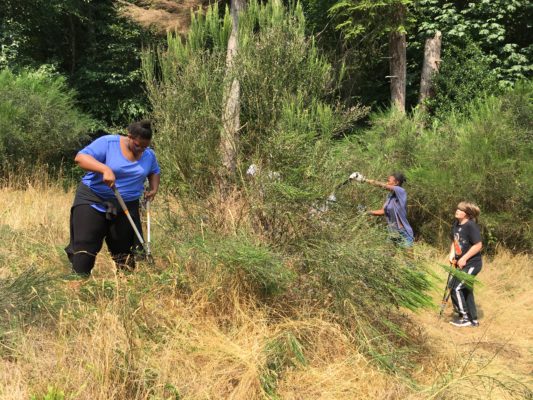
We have a tree-planting event coming up soon, how does the weather affect stewardship planning?
We originally planned to plant trees on our Grovers Creek Preserve in February, but due to the recent snowstorm, we had to postpone. We want to plant them as soon as the last hard freeze, which gives them that much longer to get established. The last couple of summers were the driest in history and took a toll on some of our plantings. (The event will now be held on March 9th, sign up here!)
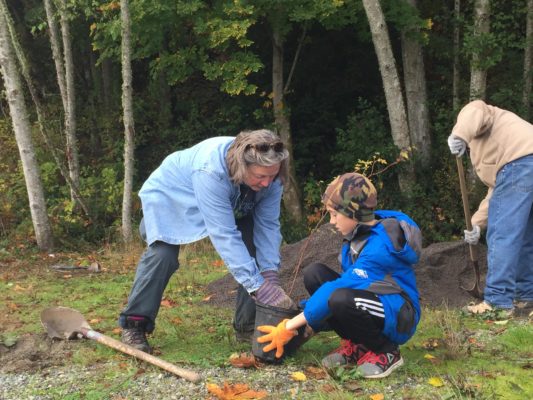
Looking back, what’s one of the most exciting stewardship projects you were a part of at GPC?
The coolest, biggest, best restoration we’ve ever done is to reestablish salmon habitat on the Klingel Wetlands Wildlife Refuge. The recent ‘State of Salmon’ report showed that of the 15 threatened salmon populations, the Hood Canal summer chum are one of only two reaching recovery goals. It’s exciting to know this restoration work played a hand. (Read more about the project.)
Tell me about one of GPC’s stewardship partnerships.
GPC has a number of dedicated volunteer property stewards who help keep an eye on our properties. The Clear Creek Task Force is a great example of a partner organization that does some real heavy lifting on the stewardship of GPC and county properties along the trail, year in, year out. That trail is a real community asset, and they keep it open despite significant difficulties presented by the urban environment surrounding it.
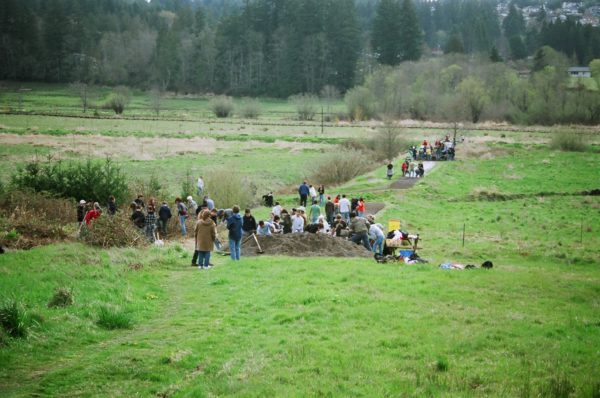
Why is GPC’s mission important to you?
I was born in Bremerton and spent a lot of time out in the peninsula’s forests and shorelines growing up. They mean a lot to me. There’s been so much suburbanization of the peninsula during my lifetime alone. I relish the opportunity to help preserve our remaining undeveloped areas.
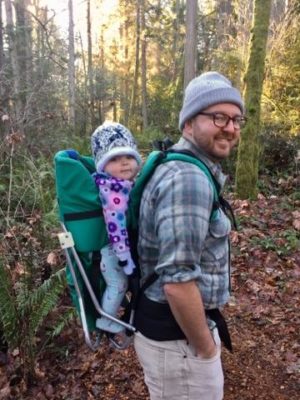
GPC is so thankful to all our partners and members who help steward our land forever! And special thanks to Erik, for his many years (and more to come) giving his time and mind to help protect the peninsula he loves so much.
